7 Winter Furnace Maintenance Tips
Posted on by WestAIR Heating & Cooling
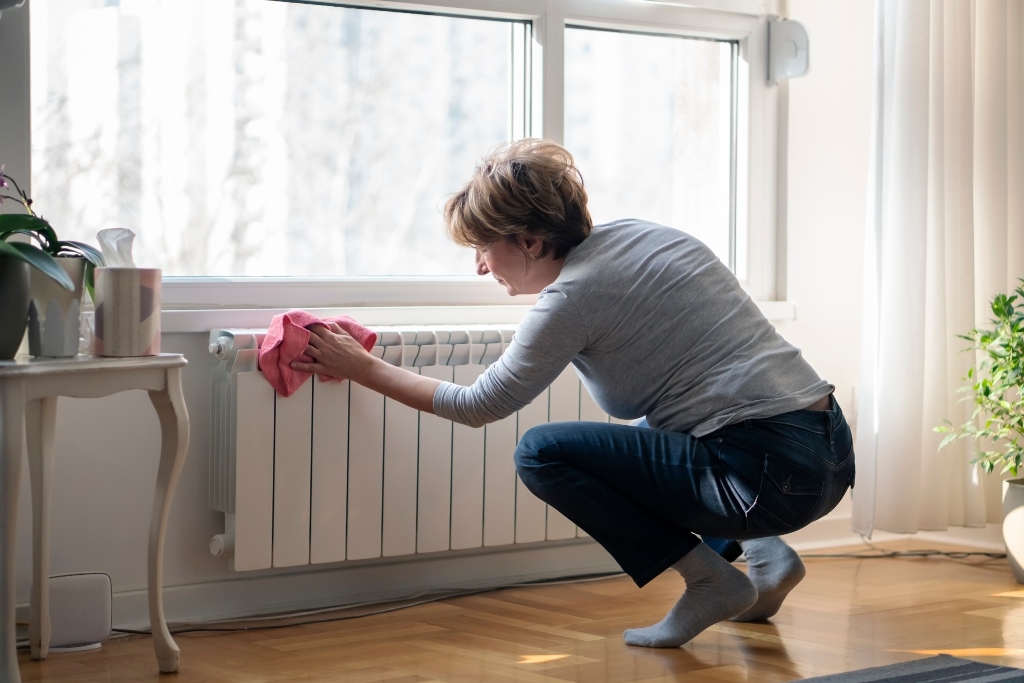
We rely on our heating systems a lot during Minnesota’s long, brutal winters. As we continue through the coldest months of the year, homeowners should take steps to minimize stress on their HVAC system to help prevent inconvenient breakdowns and costly repairs. Use these winter furnace maintenance tips to enjoy optimal performance, efficiency, and comfort all season long.
- Keep the air filter clean. A clogged filter forces the HVAC system to work harder, decreases efficiency, and is also the most common cause of breakdowns. Be sure to change or clean your air filter every month.
- Maintain a clear, clean area around the unit. Giving your furnace room to breathe promotes safe, efficient operation, as well as easy access to the unit for you or your HVAC specialist if necessary. As a general rule, give your furnace or indoor air handling unit three feet of clearance and clean the space regularly.
- Inspect flue pipes for damage. Your furnace naturally produces gases during the combustion process, and flue pipes carry these gases to your home’s ventilation system to be safely exhausted. Check the pipes for any damage that could be leaking CO into the home, as well as signs of soot and/or rusting. Have an experienced HVAC technician inspect any issues immediately.
- Clean supply and return vents. Supply vents feed warm air produced by your furnace to your home; return vents pull old indoor air and deliver it to the HVAC system to maintain indoor air quality and comfort. Cleaning them helps prevent dust and other airborne irritants from getting into the air you breathe or sucked back into the system.
- Check for signs of dirty ductwork. Air ducts carry air between your HVAC system and home and naturally collect dirt, dust, and other debris over time. Issues to look for include mold around your vents or furnace, excessive dust accumulation (especially around vents), inconsistent heating throughout the home, unexplained increases in allergy symptoms and/or respiratory problems, and signs of a rodent or pest infestation. Schedule professional duct cleaning service if you see any of these, and plan to do so annually.
- Turn the temperature down but keep the system on. Turning the thermostat down at night or when the house is empty can help cut utility costs, but don’t turn the system completely off. Having to fire the furnace back up whenever you wake up or return home requires more energy and adds unnecessary stress. Just remember to go no lower than 55 degrees (or closer to 60 during extreme cold) to help prevent frozen pipes. For ultimate ease and efficiency, consider installing a programmable thermostat that lets you pre-set temperature settings for multiple days ahead of time.
- Don’t ignore the warning signs. Don’t wait for a complete breakdown to give your furnace the attention it needs. If you notice uneven or inefficient heating, unexplained spikes in energy bills, or any other furnace issue warning signs, call WestAIR for professional diagnosis and repair before the issue gets worse.
It may be the beginning of a new year, but we have a lot of cold days and harsh weather ahead of us yet. Follow these winter furnace maintenance tips to help your heating system run safely, efficiently, and uninterrupted for the rest of the season.
Trust the highly knowledgeable and experienced HVAC professionals at WestAIR for all your heating and cooling needs. Contact us to learn more.
This entry was posted in Duct Cleaning,Energy Savings,Furnace,Health Tips,Heating,HVAC Maintenance,Indoor Air Quality,Tips,Winter and tagged Duct cleaning, Duct cleaning service, Ductwork, Energy efficiency, Furnace Education, Furnace Maintenance, Furnace Maintenance Tips, Furnace Tips, Heating, Heating System, Heating System Education, Homeowner Education, Homeowner Tips, HVAC Maintenance, HVAC Maintenance Tips, WestAIR Heating & Cooling, Winter Furnace Maintenance Tips, Winter Heating Tips, Winter HVAC, Winter HVAC Safety, Winter HVAC Tips
Energy-Saving HVAC Tips for Summer Cooling
Posted on by WestAIR Heating & Cooling

So far, June has given Minnesotans multiple occasions to fire up the A/C. With the dog days of summer yet to come, plenty more hot and humid days await. But don’t sweat it – WestAIR is here to help! We put together these energy-saving HVAC tips to help minimize your utility bills this cooling season.
Prevent Issues Later with Professional Service Now
Having an HVAC technician inspect, service, and clean your system now helps ensure peak performance and prevent costly repairs down the road. If you haven’t already, contact your local HVAC professional about the following services.
- Annual preventative maintenance: Give your system a tune-up before the season to ensure optimal performance and efficiency. During service, the technician can also catch small issues before they become expensive repairs and help you decide if it’s time for an upgrade.
- Duct cleaning: Ductwork should be cleaned annually as dirt, pollen, hair, dust, and other particles collect inside and reduce indoor air quality over time. They can also clog up the system if left long enough, decreasing its efficiency and increasing energy bills.
Optimize A/C Performance with Tips Around the Home
You don’t have to shut down your HVAC system and suffer through the heat to cut costs. Instead, follow these simple tips and get the most out of your A/C this summer.
- Keep vents clean and clear. Blocking vents with rugs, furniture, and other items decreases efficiency. Make sure cool air can circulate freely, and vacuum vents regularly to clean away dust, dirt, and other debris.
- Maintain a clean air filter. Filters prevent debris from getting into your HVAC unit and naturally become dirty or clogged, which adds stress onto the system. To avoid issues, change (or clean, if re-usable) your filter monthly.
- Seal the home. Don’t let cool air escape or heat enter whenever possible. Caulk any cracks or seams around the home; lock windows shut to ensure a tight seal; draw blinds and curtains to prevent any natural heating from sunlight.
- Be smart about electronics. Unplug chargers, small appliances, and other electronics when they’re not in use. Also, avoid placing heat-generating devices like lamps and TVs near thermostats – the heat can make it seem like the room is hotter than it really is and trick the thermostat into working harder to cool the home.
- Grill outside or plan cold meals. Cooking in the oven or on the stove produces heat and can raise the temperature in your kitchen by up to 10 degrees. Take advantage of the summer weather and fire up the grill, or plan some cold meals like salads and sandwiches.
- Use ceiling fans. Set ceiling fans to spin counterclockwise so they blow air straight down. This will keep cool air low and create a wind chill effect, allowing you to turn the thermostat up a few degrees.
- Consider installing a programmable thermostat. While proper thermostat management can help keep bills low, constantly changing the thermostat can impact your HVAC system’s efficiency and health. Programmable thermostats let you pre-set custom temperature and humidity levels for multiple days instead of monitoring it manually.
Lower Utility Bills with Strategic Water Use
According to the U.S. Department of Energy (DOE), 18 percent of your home’s energy consumption comes from water heating. Try these water use strategies to help cut utility costs throughout the summer months.
- Wash clothes with cold or warm water. According to the U.S. Environmental Protection Agency (EPA), water heating accounts for 90 percent of the energy used by your washing machine. Avoid washing with hot water whenever possible. Also, line-dry laundry outside to save more energy and reduce indoor humidity.
- Take cold(er) showers. Hot showers require more energy, and the steam they produce increases humidity. Take colder, shorter showers to lower costs and help maintain indoor air quality.
- Water the lawn and garden at dawn or dusk. Water usage tends to increase in the summer, especially outdoors due to lawn, garden, and landscape watering. Do these tasks in the early morning or at dusk to prevent the water from quickly evaporating in the summer heat. This will help cut costs and keep your yard and garden healthy.
With July and August still ahead, we know the cooling season is far from over here in Minnesota. Use these energy-saving HVAC tips to minimize utility costs while keeping your home cool and cozy this summer. And for all of your heating and cooling needs, rely on the residential HVAC experts at WestAIR for thorough, high-quality service.
Contact us today to schedule service and learn more.
This entry was posted in AC,Air Conditioning,Cooling,Duct Cleaning,Energy Savings,Tips and tagged air conditioning, Air filters, Cooling Mistakes, Cooling Tips, Duct cleaning, Energy efficiency, Energy efficient, Energy savings, Energy-Saving HVAC Tips, Energy-saving tips, Family Health, Home Cooling, Homeowner Education, Homeowner Tips, HVAC Education, HVAC Maintenance, HVAC Mistakes, HVAC Safety, HVAC tips, Indoor air quality, Preventative Maintenance, Summer Cooling, Summer HVAC Tips
Ready to Replace: The Benefits of a Furnace Upgrade
Posted on by WestAIR Heating & Cooling

How old is your furnace? According to Consumer Reports, a furnace’s average life expectancy is 15 – 20 years (depending on the fuel type). Age is just one indicator that it’s time to replace your heating system, and doing so can do more than just ensure a cozy home all winter. Read on to learn more about the benefits of a furnace upgrade.
Increased Energy Efficiency
Modern furnaces offer significantly more efficiency than older ones, which ultimately means lower utility bills. This is measured by the system’s annual fuel utilization efficiency (AFUE) – the amount of the system’s annual energy consumption that actually produces heat. Older systems score between 56 percent and 70 percent AFUE, meaning only 56 to 70 percent of the energy consumed becomes heat for the home. Modern high-efficiency heating systems offer 90 percent to 98.5 percent AFUE, helping you use less and save more.
Compatible with Programmable Thermostat – More Savings
Programmable thermostats can save you up to 33 percent on annual heating and cooling costs. You can schedule temperatures ahead of time, so the system automatically turns down when you’re away to save energy and back up when you’re at home for comfort. Properly used along with your new energy-efficient furnace, a programmable thermostat can help you maximize your savings.
Optimal Comfort Throughout the Home
Advanced technology in today’s furnaces helps provide stable, even temperatures throughout the home, eliminating cold spots and ensuring comfort.
Some modern features and benefits:
- Zoning systems let you regulate the temperatures in each individual room, making sure the heat is utilized how you want.
- Variable-speed operation means the blower motor has multiple speed settings. It will work at high capacity during periods of extreme cold to circulate more warm air throughout the house, and low capacity on more mild days to use less energy. Older systems have fixed-speed motors that operate at full capacity whenever they run.
- Two-stage furnaces will operate in the first stage (about 65 percent of full capacity) until outside temperatures drop low enough, in which case it will kick into stage two and produce more heat to fulfill the additional requirements. As a result, these systems enhance efficiency and provide a steady flow of warm air for comfort on those extra-cold days.
Improved Safety
Due to normal wear and tear over time, an older furnace can develop a crack in its heat exchanger and leak poisonous carbon monoxide (CO) into the home. Common signs of a CO leak include:
- Weak, flickering, and/or yellow burner flame
- Soot streaks near furnace
- Moisture on windows, walls, or other cold surfaces
- Rusting on flue pipes/other pipe connections or appliance jacks
- Small water leak at base of chimney, vent, or flue pipe
Signs of human exposure can be mistaken for common illnesses:
- Flu-like symptoms
- Headaches
- Nausea
- Disorientation
- Burning feeling in nose/eyes
If you notice any of these signs of CO poisoning, contact your local HVAC specialist immediately. Installing a new furnace will help keep your home feeling cozy through the winter without putting your family in danger.
Better Indoor Air Quality
Your HVAC system is also responsible for the air quality of your home, and keeping a clean air filter is key. However, even with a clean filter, an older furnace can cause excessive dust, allergens, and dry, stale air in your home.
Enhanced Reliability
Frequent issues and expensive repairs to your furnace add up quickly, and they also leave your home with insufficient or no heat until fixed. While you should have your system serviced annually, having to call for a repair shouldn’t be a regular occurrence. A new furnace gives you the peace of mind that your family will be comfy all winter long.
While important, keeping your home warm is only one of the benefits of a furnace upgrade. We rely on our home’s heating system a lot here in Minnesota, so it’s important to make sure yours is up to the task. Don’t wait until it’s too late! Have your system inspected today and see if this is the year you replace.
WestAIR installs high-efficiency Rheem furnaces because they use advanced, state-of-the-art technology to offer the best in energy-efficient home heating. From HVAC service to system replacements, our experts are here for all your heating and cooling needs.Contact us for more information.
This entry was posted in Furnace,Heating,Indoor Air Quality,Tips,Winter and tagged Benefits of a Furnace Upgrade, Energy efficiency, Furnace replacement, Furnace replacement from Rheem, Furnace Upgrade, Heating, Heating System, Heating System Upgrade, High-Efficiency Furnace, Home Heating, HVAC Upgrade, Indoor air quality, Rheem Furnaces, Rheem Pro Partner, WestAIR furnace replacement, Winter
Winter Energy-Saving Tips
Posted on by WestAIR Heating & Cooling
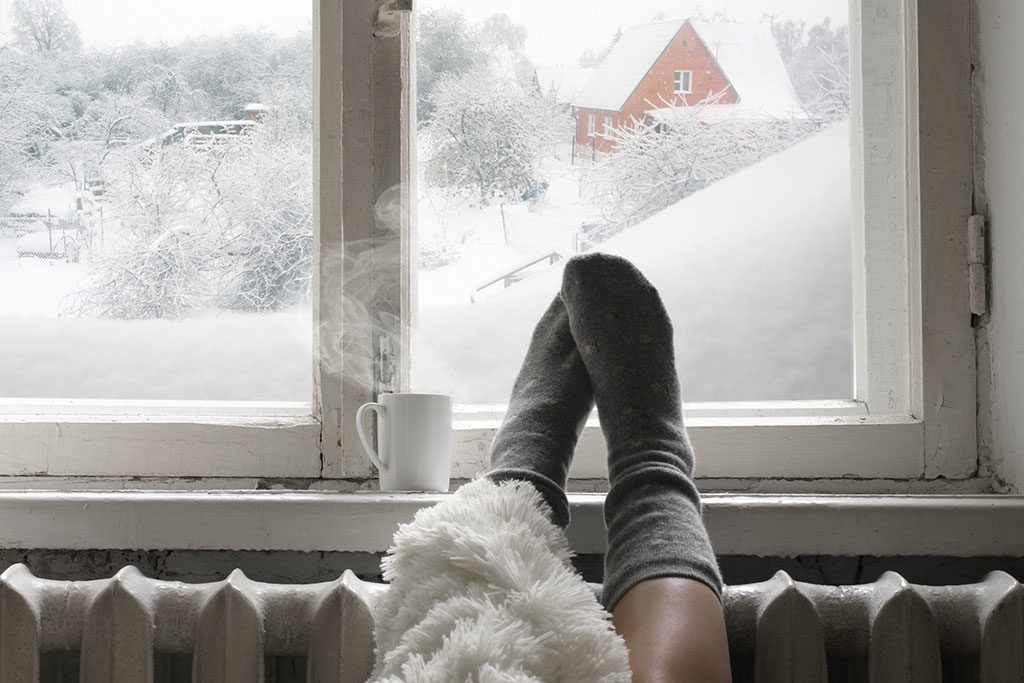
It’s the season of heavy snow, biting wind, and frosty windows. In the freezing temperatures, you may notice your energy bills spike as you try to heat your home. WestAIR is here to help. Follow our winter energy-saving tips to keep cozy:
- Insulate your windows with heavy curtains. Keep the curtains closed at night and open in the day for free solar heating.
- If the warmth in your home sneaks away the moment the furnace cycles off, you may be losing heat through drafty windows. Use caulk, weather stripping, or draft stoppers to seal leaks around doors and windows.
- Seal air leaks in plumbing penetrations, gaps around the chimney, recessed lights, and unfinished spaces behind cupboards and closets. Insulate the attic or crawl space and other areas of the home according to recommendations for your region.
- Reverse ceiling fans so they run clockwise. Hot air rises, so the fans will push the warm air back down to you. Running them in the winter can save up to ten percent in energy costs.
- Move furniture and other items away from vents so the heat can travel from the ductwork to your rooms.
- If you have a wood-burning fireplace, keep the damper closed when it’s not in use so the warm air doesn’t escape out the chimney.
- Change filters. Dirty, clogged filters make your heating system work harder, which puts stress on your equipment and increases energy bills.
- Avoid using exhaust fans, which will suck out the warm air.
- Recycle oven heat. When you finish baking something and turn the oven off, leave the door open to warm the kitchen.
- Install a whole house humidifier to combat the dry air. Relative humidity makes your home feel warmer at lower temperatures, so you can turn the thermostat down and still feel comfortable.
- Turn the thermostat down when you sleep and when you leave, but no more than five degrees. Your furnace may spend more energy starting up again than it does keeping the home within a steady temperature range.
- Invest in a programmable thermostat, so it can adjust the temperatures for you. According to Minnesota Energy Resources, you could save up to $180 dollars a year just by upgrading this simple accessory.
- Don’t heat unnecessary spaces. Learn how you can control where the heat goes in your home with automatic zoning.
- Schedule service for your heating system.
WestAIR is committed to keeping your home warm this winter. We understand the stress that Minnesota winters place on your heating system and pocketbook. Check out our Heating 101 guide for more seasonal HVAC tips.
Contact us for more information.
This entry was posted in Energy Savings,Heating,Tips and tagged Automatic zoning, Energy efficiency, Energy-saving tips, Heating, Heating 101, HVAC, HVAC tips, Indoor air quality, Save money, Seasonal hvac tips, Thermostat, Whole house humidifier, Winter
Surprising Ways to Reduce Humidity in Your Home
Posted on by WestAIR Heating & Cooling
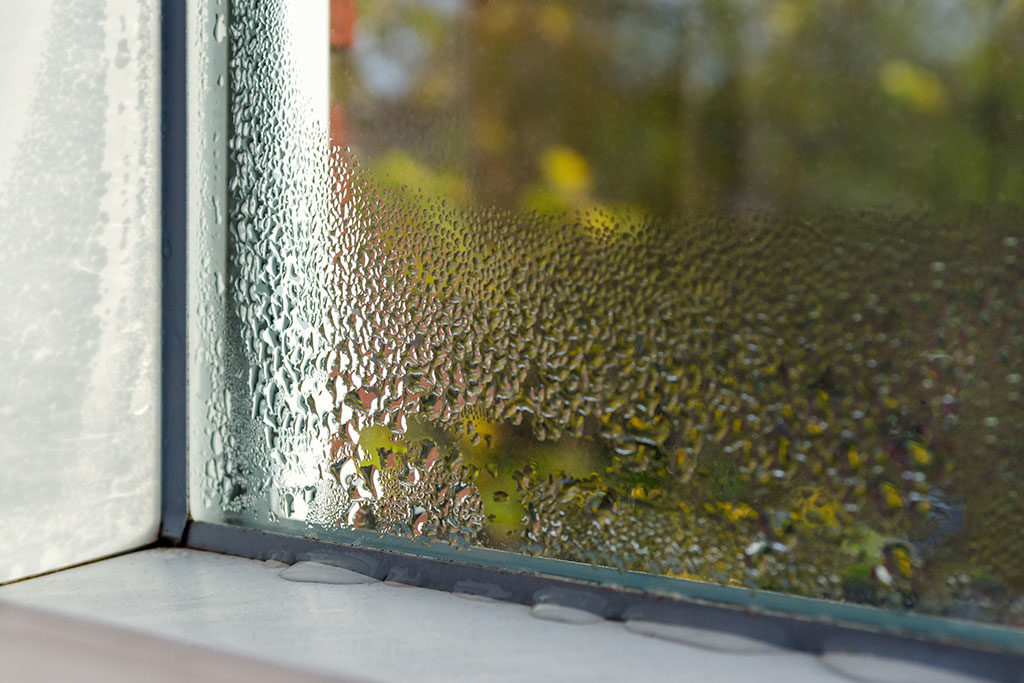
If you’ve been noticing foggy windows, musty odors, or clammy air throughout your home, chances are, your humidity levels are high. Humidity can both rob you of comfort and threaten your health. We don’t want you to suffer through the stifling heat, so we’ve outlined some surprising ways to reduce humidity in your home.
But first, a word about relative humidity (RH): RH measures water vapor relative to the temperature of the air. RH illustrates the amount of water in the air in relation to the total amount of humidity that could be held at the current temperature. Weather forecasts report relative humidity because it affects how we feel the temperature. Humid air feels warmer; dry air feels cooler. The ideal indoor relative humidity for a home is between 40 and 60 percent. If your RH is lower or higher, follow these tips:
Go old school with laundry
Dry your clothing outside. If you hang wet clothing inside to dry, all the moisture will evaporate into the air.
Accessorize with plants
Invest in some household tropical plants like Boston ferns, English ivies, Peace lilies, Reed Palms, or Tillandsias. These plants absorb moisture from the air instead of through the roots.
Take cold(er) showers
Hot showers create steam. Plan to bathe after exercising or spending time outside in the heat. You’ll be less tempted to jump into a steaming shower, and the cool water will feel refreshing. If nothing else, run the exhaust fan during and after showering.
Eat more salads
Hot weather provides the perfect opportunity to cook outside on the grill or eat cold meals like salads and sandwiches. Avoid boiling water; instead, save the heavy pasta for cooler weather. Your body will thank you in more ways than one.
Check the drainage route
In high humidity, your air conditioner or dehumidifier will produce a lot of condensation that has to go somewhere. Regularly empty the drip pan and be sure the drain lines are working properly so the water doesn’t evaporate back into the air.
Replace your flooring
Carpet is known to retain moisture. If you’ve tried all the above methods to decrease humidity, but still have a problem with moisture, consider replacing the carpet with hardwood flooring.
Benefits of proper humidity
With lower humidity levels, you could raise the thermostat setting a few degrees and still be comfortable. High humidity may cause headaches and asthma symptoms such as wheezing, shortness of breath, or a chronic cough. Proper humidity levels are easier on your respiratory tract and can:
- Reduce your cooling costs.
- Minimize wear on your HVAC system.
- Prevent dust mites, mold, bacteria, and mildew.
- Eliminate foul odors.
- Help you sleep better.
If you are still having trouble, consult with the professionals at WestAIR Heating & Cooling. We offer high-efficiency air conditioners to keep you cool in the muggy season and countless air quality accessories to reduce humidity. Schedule service to have a technician visit your home and recommend the right solutions for your family’s total indoor air comfort.
Contact us for more information.
This entry was posted in Air Conditioning,Cooling,Health Tips,Indoor Air Quality,Tips and tagged Air quality accessories, Asthma, Comfortable, Cooling, Dehumidifier, Energy efficiency, Energy savings, Grilling out, Humidity, HVAC, HVAC tips, Indoor air, Indoor air quality, Indoor air quality solutions, Muggy season
Indoor Air Quality Solutions
Posted on by WestAIR Heating & Cooling
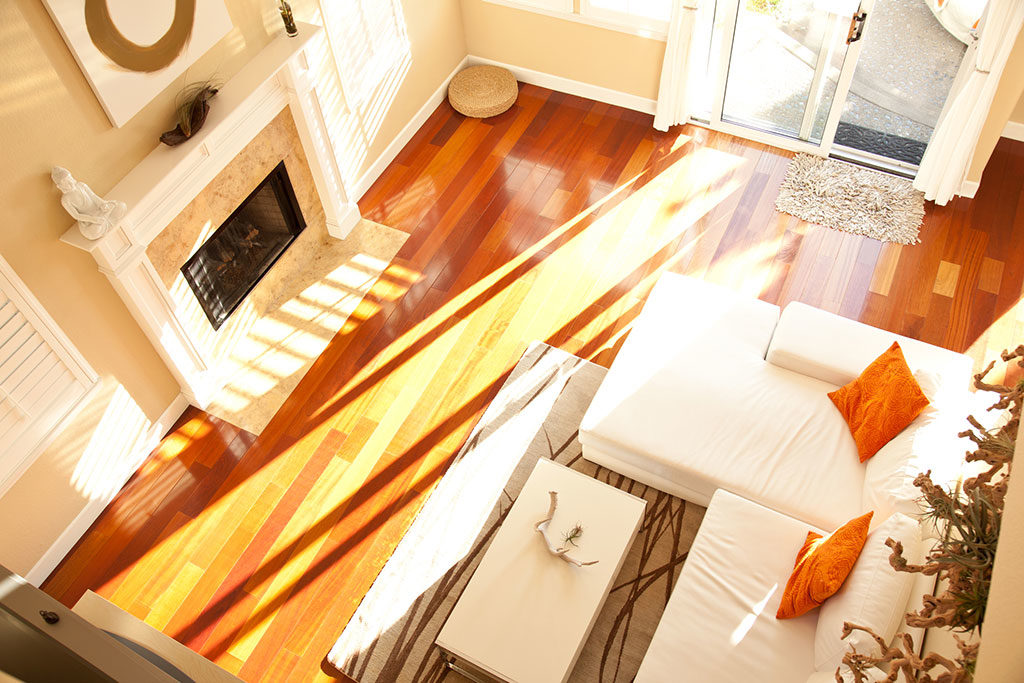
Ever looked at a ray of light streaming through your windows and noticed floating dust particles? The sunlight can reveal a lot about a room’s air quality. While it may be tempting to open up the windows and doors for a quick fix, we’re in the thick of ragweed season, so it probably won’t do you any favors. The EPA recommends upgrading your HVAC filter or using an air cleaner to reduce harmful airborne particles. Read our blog to learn why and discover some more indoor air quality solutions.
New filters
Your HVAC filter traps microorganisms, animal fur, hair, lint, dander, mold, pollen, dirt, and more so they don’t accumulate in your system or irritate your lungs. Check your filter once a month to see if it needs replacing. A clogged air filter can cause your HVAC equipment to overheat, short cycle, or even break down. At the very least, changing a dirty filter could lower your energy bills because your system won’t have to work twice as hard just to obtain adequate airflow.
Air cleaner
An air cleaner uses a filter to trap particles like bacteria, mold, ragweed, pet dander, and dust mites. It can even eliminate viruses, kill germs, neutralize fumes, and remove odors. Those with allergies, asthma, or sensitivity to chemicals can benefit from an air cleaner, which can remove up to 97 percent of pollen-sized particles.
Air exchanger
Every time you cook, shower, clean, and breathe, you release pollutants into the air. Airtight buildings are more energy efficient, but they need to somehow circulate air to maintain a healthy environment. Without adequate ventilation, old air will sit in enclosed spaces and accumulate dust, bacteria, mold, and other harmful particles.
An air exchanger provides refreshed, filtered air to reduce these allergens. Air exchangers use two fans, one to take stale air out, and the other to pull in fresh air, run it through a filter, and disperse it through the ductwork.
Dehumidifier
Humidity makes a room seem hotter than it is and increases the likelihood of mold and mildew growth. Drier air feels cooler. A dehumidifier can increase your comfort and allow you to raise the temperature a few degrees to save on cooling expenses. You can use a portable unit or install a whole house dehumidifier that works in conjunction with your HVAC system.
Dehumidifiers pull moist air over a cooling coil that condenses the moisture vapor into droplets. Moisture along the coils drips into a collection pan or directly down a drain.
Duct cleaning
In most HVAC systems, all the conditioned air passes through ductwork to supply vents in each room, and back through return registers to be conditioned again. Particles floating in the air could become trapped in the many channels and crevices behind your walls. If the ductwork is dirty, your indoor air will be, too, no matter what air cleaning accessories you install. During air duct cleaning, your technician will use powerful vacuums and brushes to dislodge debris and allow proper airflow.
Bonus tip
Plants clean the air of carbon dioxide and can remove cancer-causing formaldehyde, benzene, and other toxins. If you are looking for an inexpensive way to purify your indoor air, bring in some potted vegetation. They can improve your physical health as well as your mental well-being by reducing stress, building memory retention, and increasing concentration, which in turn boosts productivity.
At WestAIR, we care about you and your family’s health and comfort. We offer air quality solutions to rid your home or business of harmful pollutants and provide fresh oxygen, day in, and day out.
Contact us to learn more.
This entry was posted in Duct Cleaning,Indoor Air Quality,Tips and tagged Air circulation, Air cleaner, Air filters, Allergies, Asthma, Clean HVAC ducts, Comfortable, Cooling, Energy efficiency, Energy savings, Humidity, HVAC, HVAC tips, Indoor air quality, Indoor air quality solutions
HVAC Tips for Summer Trips
Posted on by WestAIR Heating & Cooling
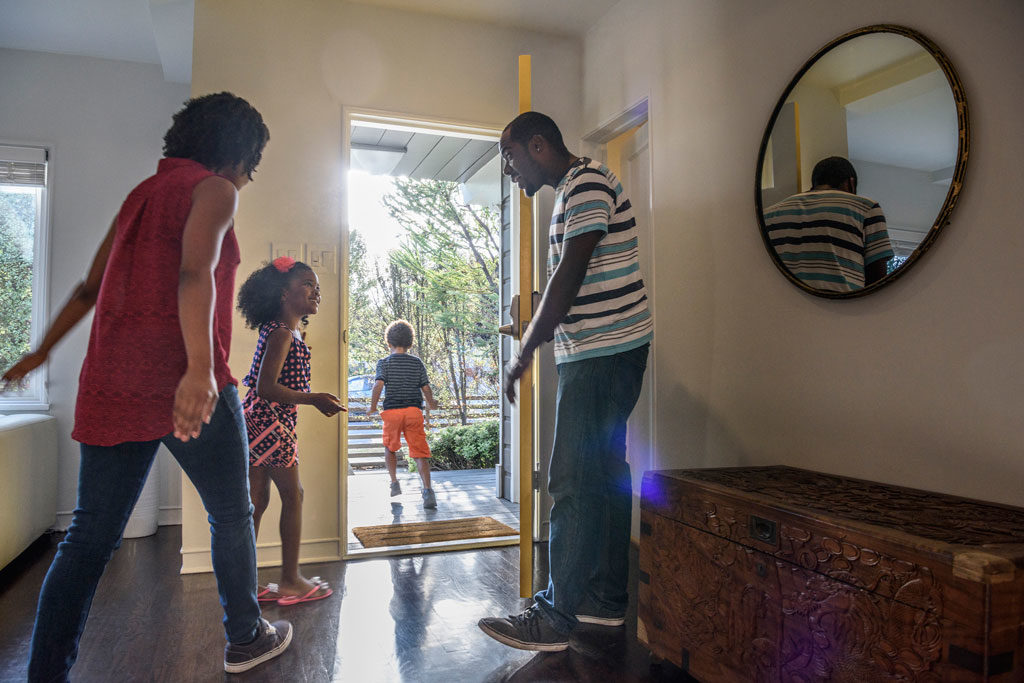
What exciting summer trips do you have planned? Before you pack up those bags and lock the door, take time to make sure your air conditioning will fare well while you are gone. Proper preparation will save you money on utility bills and keep your home’s air quality safe. So before you leave town, check out these HVAC tips for summer trips:
Don’t turn your HVAC system off
Many homeowners think they need to turn their cooling off to save money while they’re away in the summer. But you may end up spending more than you saved trying to cool your home back down when you return. An HVAC system doesn’t just regulate temperature, it also circulates air, controls humidity, and keeps indoor pollutants at bay. If you turn it off in the summer, humidity levels may rise, and you could come home to mold issues.
Program your thermostat
Before you leave, set the thermostat four degrees higher than your normal comfortable temperature, but keep it below 85 degrees. Check out the smart thermostats we offer with easy, seven-day programming and humidity control so you can rest assured your home is in good hands.
Prepare for rain
Install a full-house surge protector to save your system from power outages in case of a large summer storm or downed power lines. A surge protector will absorb the electrical overload and channel it into the ground so the power doesn’t damage your HVAC units.
Seal your home
Close all doors, windows, blinds, curtains, and storm shutters. Your home will stay cooler if you block the sun out, and conditioned air will remain inside if your home is sealed from the elements. Make sure supply and return registers are open so air circulates freely throughout the home.
Unplug
Unplugging electronics before you leave for vacation will help your system cool more efficiently. Some appliances still generate heat even if they aren’t being used. If you plan to be away for a significant amount of time, empty and unplug the refrigerator and turn down the water heater.
Give your equipment some attention
Even if you’ve just recently serviced your equipment, it’s important to check it before you leave it unattended. Replace the air filter if it’s dirty and clear the outdoor units of anything that would obstruct airflow. Pull away weeds, trim shrubbery, remove branches or twigs resting on the unit, and unclog the condensate drain if it is blocked.
Call WestAIR
Finally, schedule service so you don’t have to worry when you are states away enjoying vacation with your family. Our technicians will recharge the refrigerant if it’s low, clean the evaporator coils, and address any issues your air conditioning unit may have.
WestAIR Heating & Cooling provides cooling solutions to fit your home and budget. We offer energy-efficient A/C units, smart thermostats, filters, air cleaners, and more. Contact us today.
This entry was posted in Air Conditioning,Cooling,Tips and tagged A/C, A/C tune-up, Air circulation, air conditioning, Air filters, Comfortable, Cooling, Cooling system, Energy efficiency, Energy savings, HVAC, HVAC tips, Indoor air quality, Window curtains
Top Tips for Summer Cooling
Posted on by WestAIR Heating & Cooling
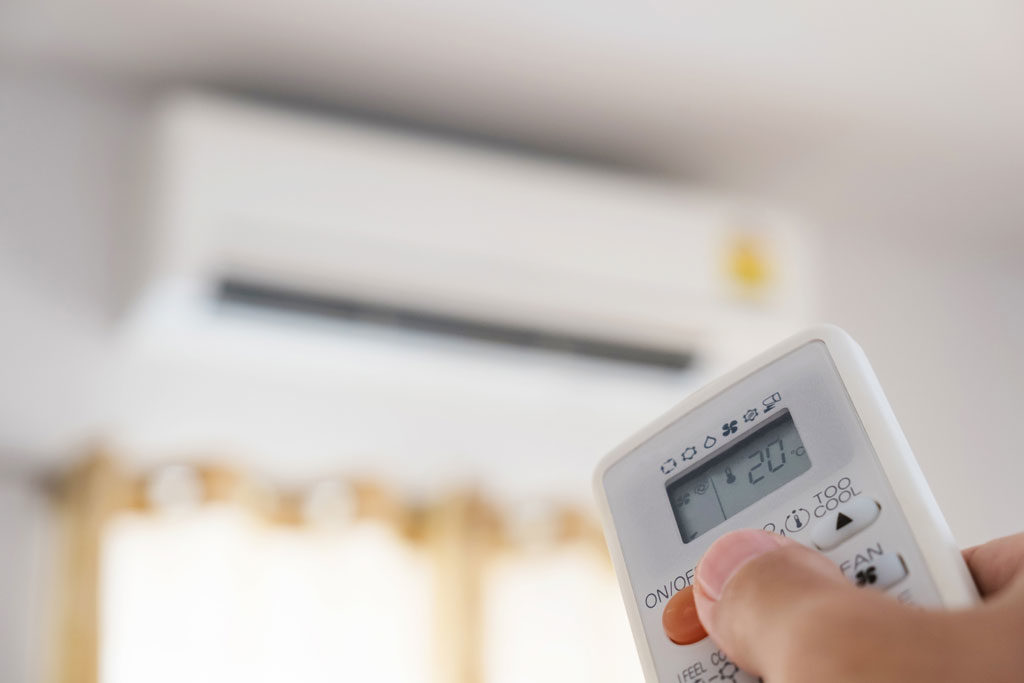
Warm weather is great for barbecues, days at the beach, and evening campfires, but not so great on your home’s cooling system. Some homeowners fight the urge to turn on their air conditioning, and others let it run, dreading their summer utility bills. Thankfully, there are options that will save you from the heat, give you peace of mind, and treat your pockets kindly. Here are some top tips for summer cooling:
Protect your home and equipment
Weatherizing your home isn’t just for winter. An air-tight system will save you money on cooling. Caulk your windows and doors so the cool air your system produces won’t escape. Up to 30 percent of home heat in the summer comes in through the windows. Use blinds, curtains, and drapes to block out the sun and keep daytime heat out.
Schedule maintenance with a qualified technician before the heat of summer. If you regularly service your HVAC equipment, it’ll last longer and run more efficiently. Proper DIY maintenance like keeping your outdoor unit clear of debris and regularly dusting your home will ensure dirt and dust don’t infiltrate your system and ruin your equipment. Check your filter once a month and replace as needed. If your air filter collects dust and debris, airflow will be restricted, and your unit will have to work harder.
Distribute air
Close off any unused rooms so you are only cooling the areas you use frequently, but make sure the rest of your home is well ventilated. Check that your supply and return registers aren’t blocked by furniture. Flip the switch on the motor housing of your ceiling fans to summer mode (counterclockwise). The blades will push the air straight down and create a wind-chill effect. Turn off your cooling system and open your windows in the evening to save money and provide your home with fresh air. Consider other indoor air quality solutions like an air exchanger or cleaner.
Avoid heat-producing appliances
Appliances that use heat can waste the cold air your cooling system produces. Instead of cooking in your oven, enjoy the outdoors by grilling more often. Air-dry your dishes and laundry instead of using the dishwasher and dryer. Take cool showers so your water heater won’t have to run as often. In addition, keep heat-producing appliances away from your thermostat so it reads the temperature accurately and doesn’t overcompensate.
If you’re still using incandescent light bulbs, replace them with LED lights. Incandescent bulbs create light by using electricity to heat up a filament until it glows. Ninety percent of the energy used to light up the filament is wasted on heat. LEDs create light through a cold process, producing little amounts of heat in comparison.
Take advantage of technology
According to the EPA, when used properly, a programmable thermostat can save you up to $180 a year in energy costs. With a programmable thermostat, you can set the temperature of your home higher when you leave for work or a trip and lower it shortly before you return.
Replace your old unit with a more efficient system. It may be more expensive up front, but a new air conditioner with a high SEER rating can give you maximum energy savings and reduce your carbon footprint. You’ll also enjoy peace of mind knowing your unit won’t likely break down on the hottest days of summer.
WestAIR Heating & Cooling provides energy-efficient Rheem A/C units, smart thermostats, filters, and other cooling solutions. We offer annual service maintenance and a variety of specials so you can save money and keep your HVAC system running smoothly. Contact us to learn more.
This entry was posted in AC,Air Conditioning,Cooling,Energy Savings and tagged A/C, A/C tune-up, Air circulation, Air cleaner, air conditioning, Air filters, Comfortable, Cooling, Cooling system, Energy efficiency, Energy savings, Grilling out, Hot days, HVAC, Indoor air quality, Indoor air quality solutions, Window curtains
10 Signs You Should Replace Your Furnace
Posted on by WestAIR Heating & Cooling
If you’re like most homeowners, you want to get the most out of your furnace and avoid the cost of replacement for as long as possible so you make sure it’s outlived its parts. When is it time to say goodbye to your furnace and buy a newer model? The excessive amount of money you put into utility bills and repairs for your old furnace may indicate it’s time for an upgrade. Though expensive, a newer model can increase your home comfort, efficiency, savings, and safety in the long run.
Signs you need a new furnace
The average furnace will last 15 to 20 years if it is installed properly and regularly serviced. But you’ll have to get a new one eventually, and a newer model can save up to 20 percent in energy. Here are 10 signs that you may need to replace your furnace:
- If you’re calling for repair services too often.
- If your furnace repair costs 50 percent or more than it would to replace.
- If it’s over 15 years old.
- If your furnace is making loud sounds (rattling, popping, humming, or screeching).
- If your furnace is short cycling.
- If your heating bill has increased even though you aren’t changing the thermostats.
- If you set the thermostat, but your home is not heated evenly.
- If you notice soot around the registers. Older furnaces spew dust, dirt, or rust particles.
- If there’s a crack in the heat exchanger. Carbon monoxide could be leaking and poisoning your home.
- If you notice rust, cracks, or corrosion on or around furnace components.
Why upgrade my furnace now?
With new technology, you can easily and conveniently regulate the temperatures in your home and be more comfortable, while saving energy. Buying a new furnace can be a planned home improvement or a panic replacement. Don’t wait until it breaks down in the freezing cold of winter. In your desperation for a warm house, you may not take the proper time to research and choose a furnace with the best deals.
But first, have an HVAC technician evaluate your entire heating system. Maybe it only needs a simple repair, like a new filter or thermostat. The WestAIR service team is here to help you make a sound decision so you can prevent costly breakdowns and save money. When it comes time to replace your furnace, our HVAC technicians will help you choose the right make and model for your home. We recommend Rheem® furnaces for their energy savings, advanced features, and reliability. Contact WestAIR today for more information.
This entry was posted in Furnace and tagged Energy efficiency, Energy savings, Furnace, Heating, Replace furnace, Rheem, Save money, Thermostat, Tune-up, Winter
What is Automatic Zoning?
Posted on by WestAIR Heating & Cooling
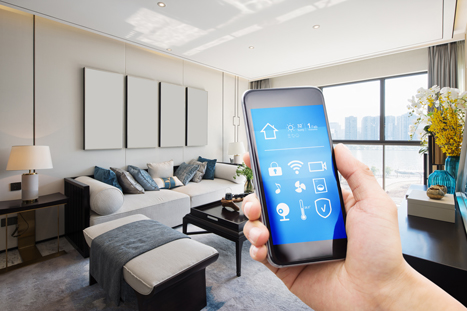 Artificial Intelligence. Self-Driving cars. Virtual Assistants. Every day, advancements in technology amaze and inspire us to automate and simplify our lives. So, what’s stopping you from getting smart with your HVAC system?
Artificial Intelligence. Self-Driving cars. Virtual Assistants. Every day, advancements in technology amaze and inspire us to automate and simplify our lives. So, what’s stopping you from getting smart with your HVAC system?
Home Automation
Automatic zoning or smart zoning, a category of smart home technology, allows you to control the temperature of each living space or zone in your home. Your bedroom or living room are primary zones that most people like to set to different temperatures. The issue? Older thermostats read the temperature in the middle of the home. Basements end up feeling cooler while second story rooms become warmer. Automatic zoning uses motorized dampers inside your ductwork that control the airflow to each zone. Select a zone and set a comfortable temperature using your smartphone or other device. The control panel in your HVAC system receives the information from your thermostat to adjust the dampers and temperature to your desired settings. It’s that simple!
New Technology
Zoning your HVAC system is not necessarily new technology but monitoring your setting from a device is. In the past, homeowners installed multiple thermostats or HVAC units to control these systems. Now you can regulate the temperature through one system in one location without ever touching a thermostat. If a room is not in use, automatic zoning reroutes the air to save energy. You can control all these settings with your phone, online, or right on the thermostat. Manufacturers create smart thermostats to sync with your Wi-Fi and easily customize to your lifestyle. Adjust your home’s temperature from anywhere!
Add-on Features
When you install automatic zoning, you can add more features to your heating and cooling system, too.
Fresh Air Intake
Bring fresh air into your home while using your heating or cooling unit.
Air Cleaner
Install an air cleaner to remove pollutants such as dust, pollen, and contaminants throughout the home.
Humidifier
Add a humidifier to make cold seasons more comfortable while preserving your home. Dry air cracks and warps the woodwork and building materials.
WestAIR can create a comfortable atmosphere for any room in your home. Save on energy bills by installing energy efficient automatic zoning. Contact us today to learn more.
This entry was posted in AC,Air Conditioning,Cooling,Furnace,Heating,Indoor Air Quality and tagged Air cleaner, Automatic zoning, Basement, Bedroom, Damper, Ductwork, Energy efficiency, Fresh air intake, Heating and cooling, Home automation, Humidifier, HVAC zoning, Living room, Smart home, Smart thermostat, Smart zoning, Thermostat
Subscribe to Our Blog
With RSS feeds, you don't have to visit our site everyday to keep up to date. Simply subscribe to our blog via RSS or Email and our posts will come to you!
Search Blog Posts
Categories
Archives
- April 2024 (1)
- February 2024 (1)
- January 2024 (1)
- February 2023 (1)
- January 2023 (1)
- December 2022 (1)
- November 2022 (1)
- October 2022 (1)
- September 2022 (1)
- August 2022 (1)
- July 2022 (1)
- June 2022 (1)
- May 2022 (1)
- April 2022 (1)
- March 2022 (1)
- February 2022 (2)
- December 2021 (1)
- November 2021 (1)
- October 2021 (1)
- September 2021 (1)
- August 2021 (1)
- July 2021 (1)
- June 2021 (1)
- May 2021 (1)
- April 2021 (1)
- March 2021 (2)
- January 2021 (1)
- December 2020 (1)
- November 2020 (1)
- October 2020 (1)
- September 2020 (1)
- August 2020 (1)
- July 2020 (1)
- June 2020 (1)
- May 2020 (1)
- April 2020 (1)
- March 2020 (1)
- February 2020 (2)
- November 2019 (1)
- August 2019 (2)
- June 2019 (1)
- May 2019 (1)
- April 2019 (1)
- March 2019 (1)
- February 2019 (1)
- January 2019 (1)
- December 2018 (1)
- November 2018 (1)
- October 2018 (1)
- September 2018 (1)
- August 2018 (2)
- July 2018 (1)
- May 2018 (1)
- April 2018 (1)
- March 2018 (1)
- February 2018 (1)
- January 2018 (1)
- December 2017 (3)
- November 2017 (2)
- October 2017 (2)
- September 2017 (2)
- August 2017 (1)
- July 2017 (2)
- June 2017 (3)
- May 2017 (2)
- January 2017 (4)
- November 2016 (1)
- September 2016 (3)
- July 2016 (2)
- June 2016 (2)
- May 2016 (4)
- April 2016 (1)
- March 2016 (2)
- February 2016 (2)
- January 2016 (1)
- August 2015 (1)
- July 2015 (1)
- June 2015 (3)
- May 2015 (1)
- July 2014 (2)
- June 2014 (1)
- April 2014 (1)
- March 2014 (1)
- February 2014 (2)
- October 2013 (1)
- May 2013 (1)
- March 2013 (1)
- February 2013 (1)
- August 2012 (1)
- July 2012 (2)
- June 2012 (2)
- May 2012 (2)
- March 2012 (1)
- February 2012 (1)
- December 2011 (1)
- November 2011 (1)
- October 2011 (1)
- September 2011 (1)
- August 2011 (1)
- June 2011 (1)
- May 2011 (1)

 Subscribe
Subscribe Subscribe
Subscribe